Earlier this month, Yuriko and I toured a suburban Chicago mansion stocked to the gills with antique mechanical devices, all asserted to be in working order (and I believe it). The collection emphasizes machines that play music, such as orchestrions, Victrolas and other phonographs, music boxes, and a theater pipe organ of massive proportions, but the place also sports an equally impressive carousel, a large number of penny- and quarter-arcade machines, a steam engine collection, slot machines, coin pianos, and a 24-foot bar.
I learned that the heyday of music machines was the late 19th and early 20th centuries, when the art of precision machining was well developed, but before radio and standardized phonograph records dampened demand for such machines.
Our affable and knowledgeable tour guide requested those on the tour, about 40 of us, not post any pictures to social media. I took that to mean Facebook and Instagram and the like, not a standalone obscurity like BTST.
Even so, in the spirit of the request, I won’t post of the name of where we went or tag the photos, making it harder for search engines to find them. Of course, it would take only a modest amount of Googling to find out where we were, considering the description I’m going to offer. But I won’t post the information here.
The property dates from the 1970s, with later additions, on a piece of land that’s large enough that you can forget there’s a city or even suburbs not too far away. The family that owns it made their fortune selling a common foodstuff, and its packaging, in a big way. The place is not a museum, but still occupied by members of the family. Even so, they offer tours and other events periodically.
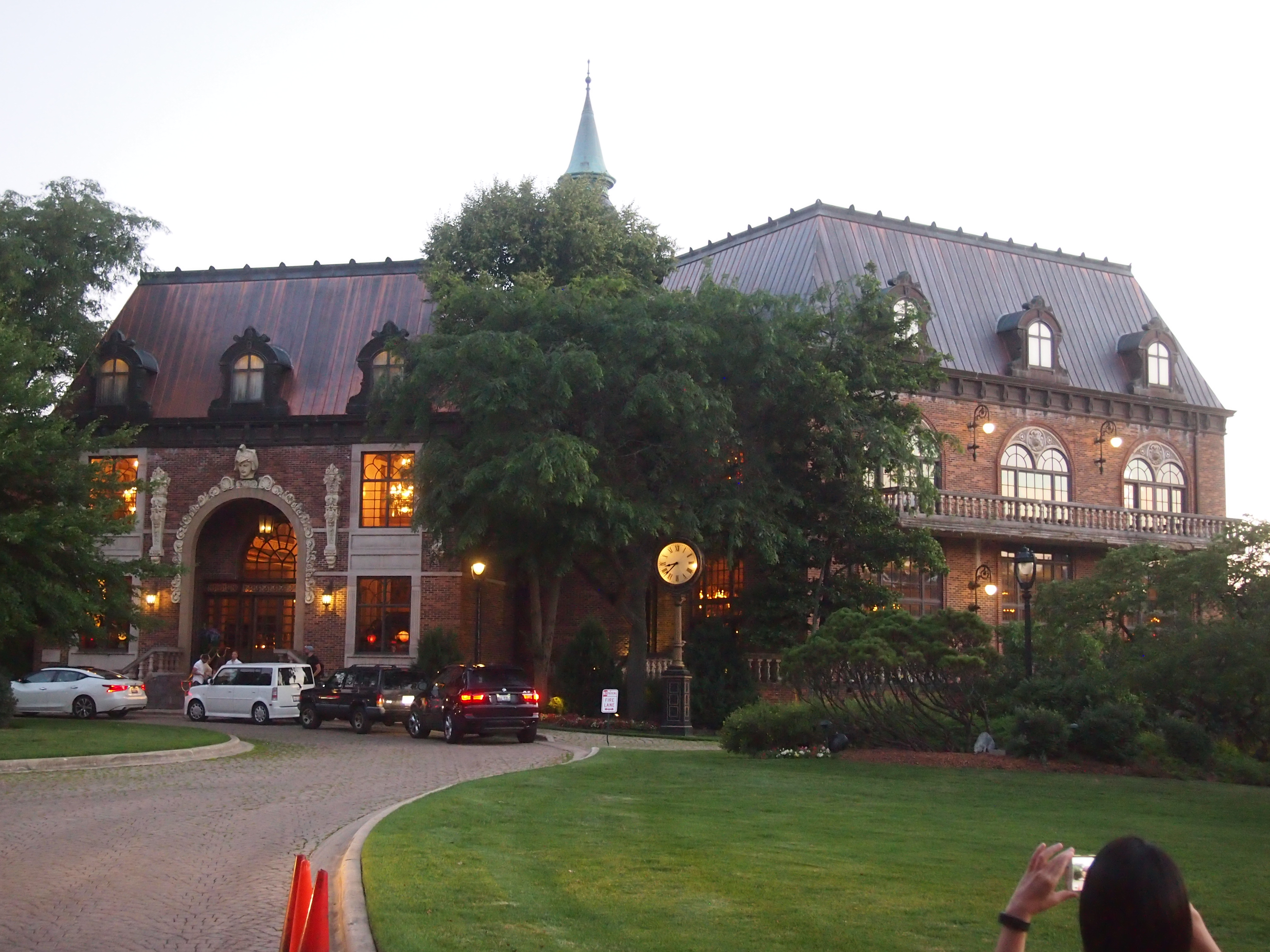 Though the tour wasn’t about the house, the building does have some nice features, such as the main entrance skylight and chandelier.
Though the tour wasn’t about the house, the building does have some nice features, such as the main entrance skylight and chandelier.
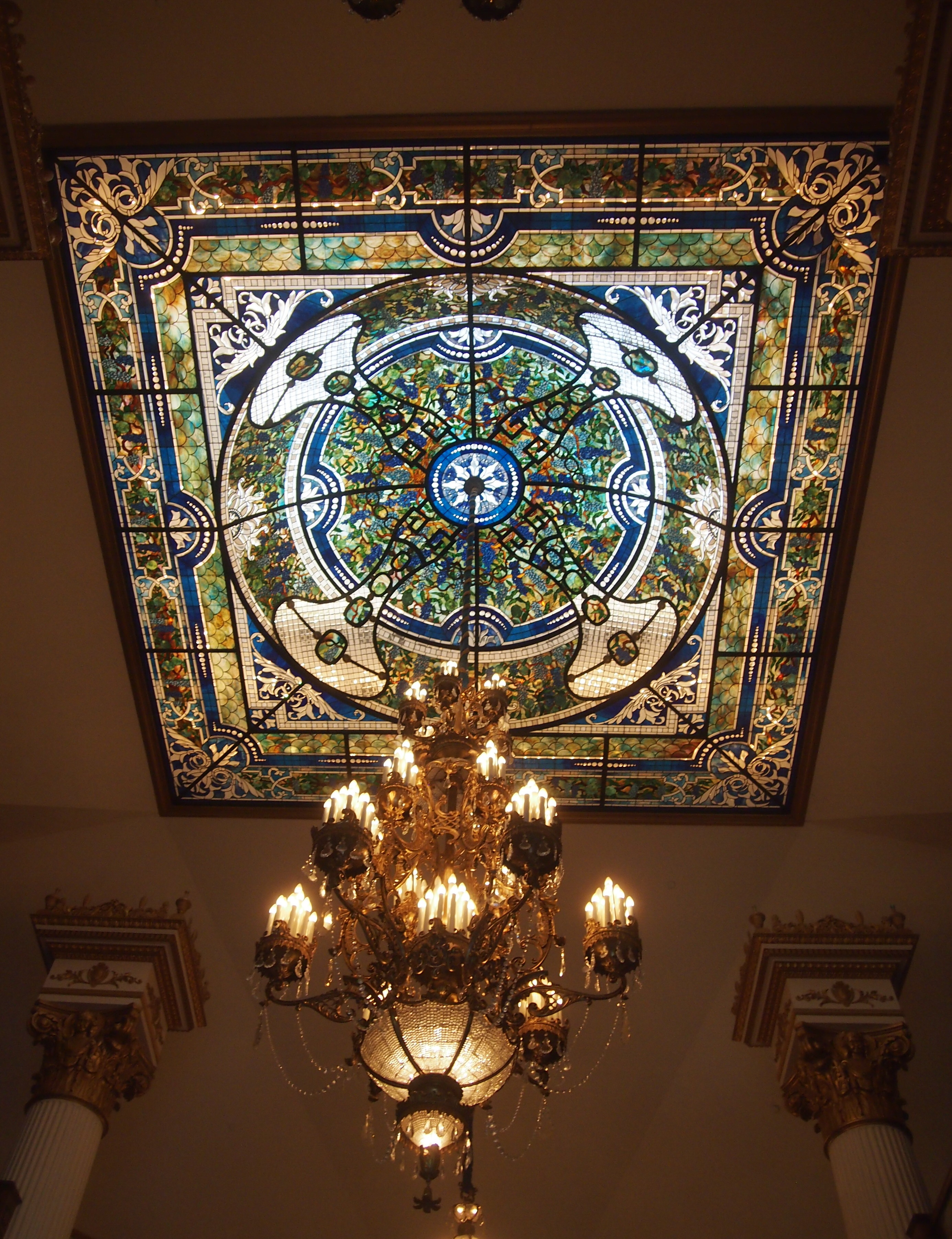 Mainly, you go to see the collection of antique machines, which are a fascination of the family patriarch and his children. It’s an extraordinary array of devices, housed in a succession of rooms.
Mainly, you go to see the collection of antique machines, which are a fascination of the family patriarch and his children. It’s an extraordinary array of devices, housed in a succession of rooms.
The displays start at the main entrance where, among a number of other machines, is a JM Hof & Mukle roll organ at the top of the grand staircase.
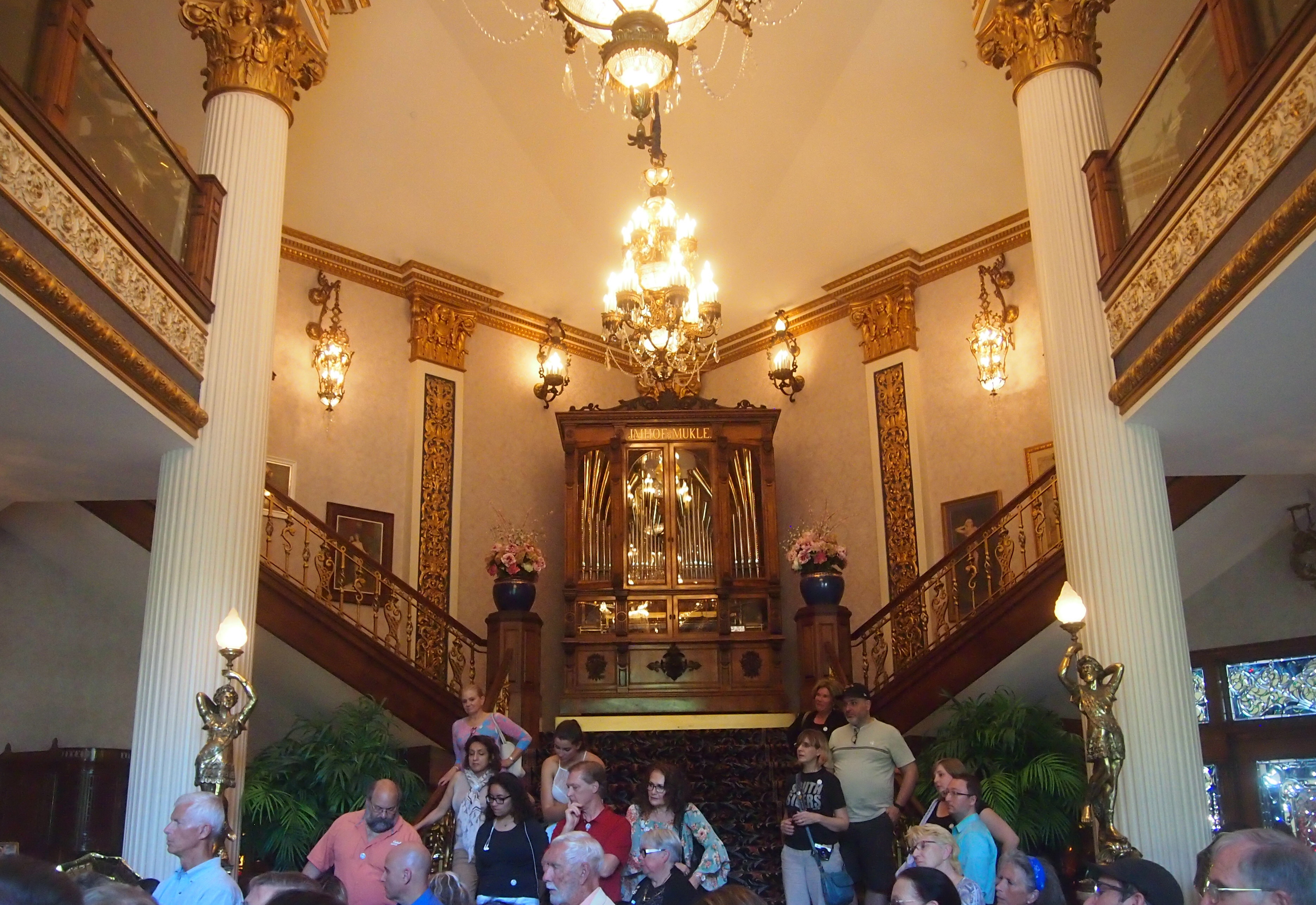 The three-story Music Room includes a large number of machines.
The three-story Music Room includes a large number of machines.
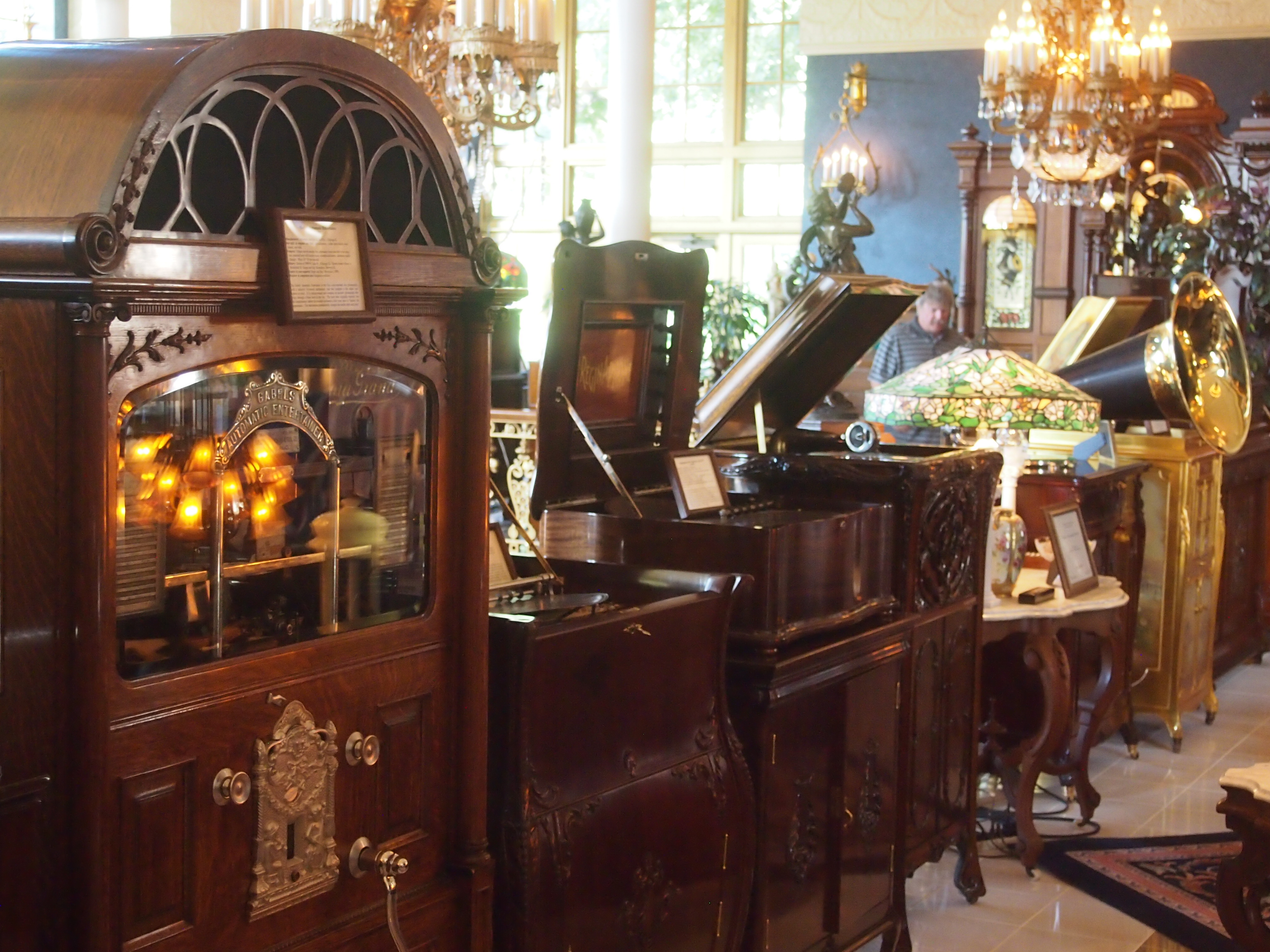 I liked this charming Frati Barrel Organ, made in Germany ca. 1905.
I liked this charming Frati Barrel Organ, made in Germany ca. 1905.
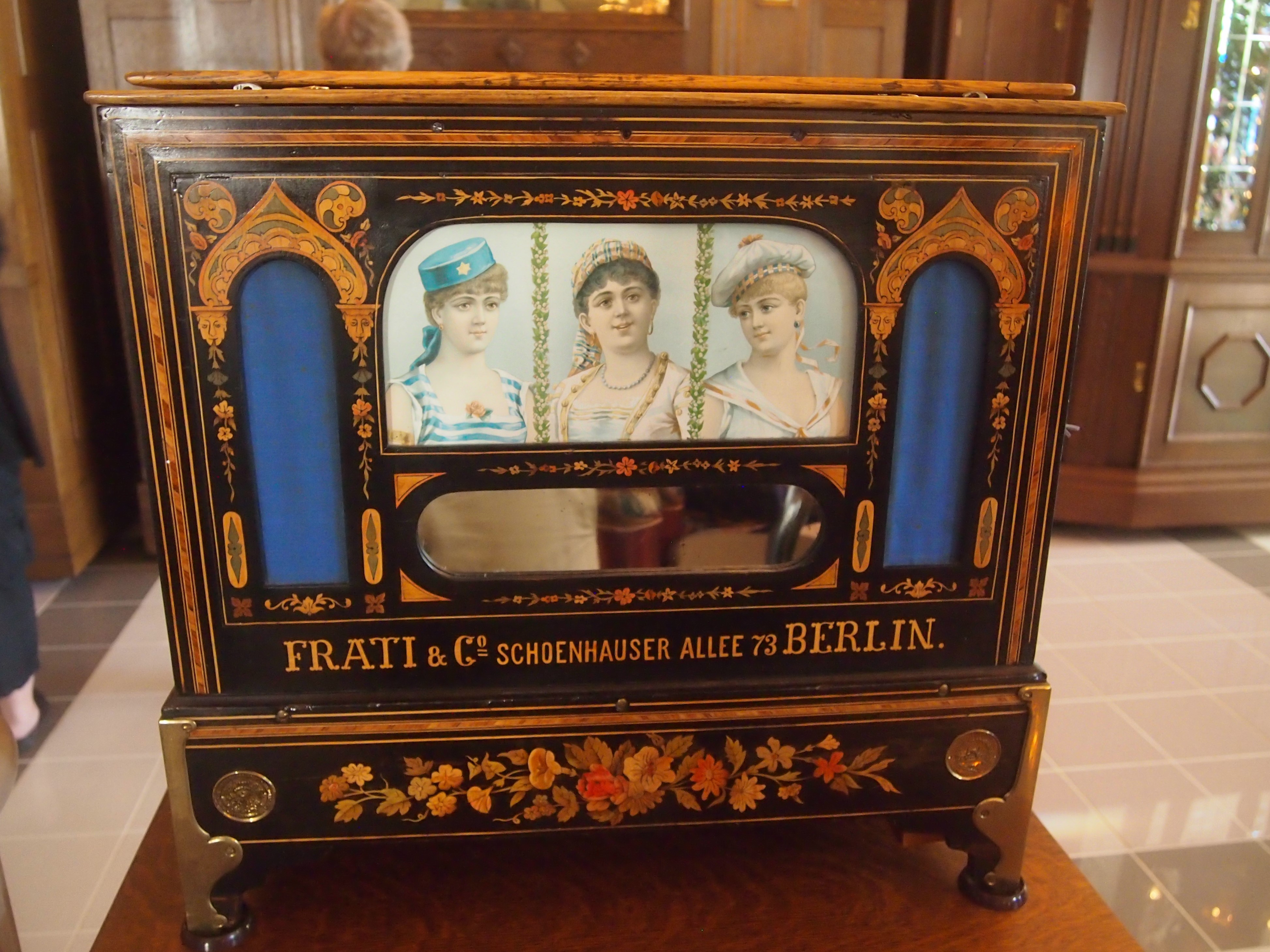 A much larger Weber Otereo Orchestrion, also made in Germany, ca. 1910.
A much larger Weber Otereo Orchestrion, also made in Germany, ca. 1910.
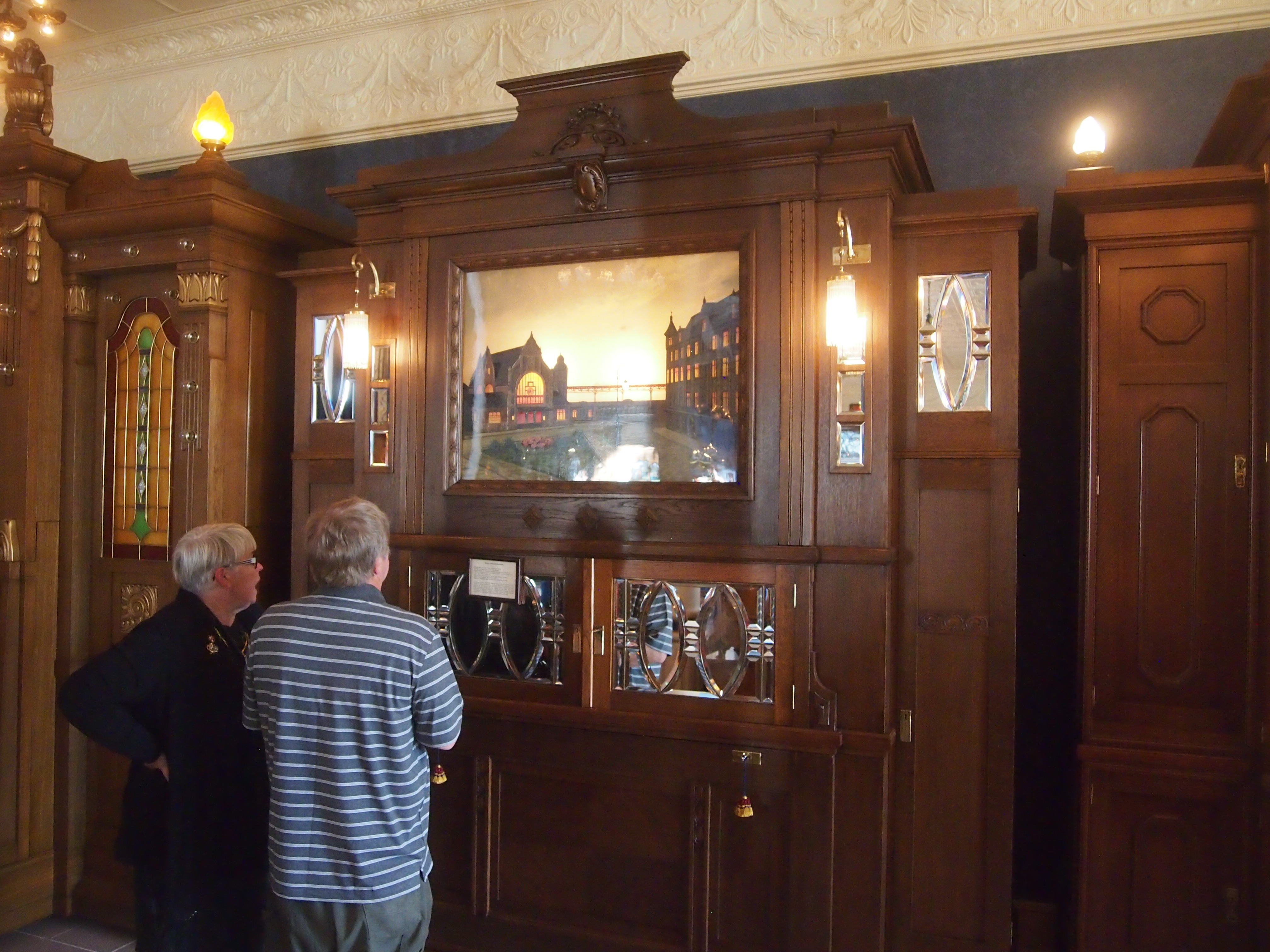 According to its sign, “… between 1905-1910, animated scenes were very popular in some models of German orchestrions. This early Weber Otereo features a scene depicting the train station in Gelsenkirchen, Germany, complete with back-lighted silhouettes of an animated train, zeppelin, and other items. Everything in the Otereo operates on air pressure…”
According to its sign, “… between 1905-1910, animated scenes were very popular in some models of German orchestrions. This early Weber Otereo features a scene depicting the train station in Gelsenkirchen, Germany, complete with back-lighted silhouettes of an animated train, zeppelin, and other items. Everything in the Otereo operates on air pressure…”
The guide demonstrated this machine, and we listened to it play but also watched the animated scene.
The centerpiece of the Music Room was the organ console.
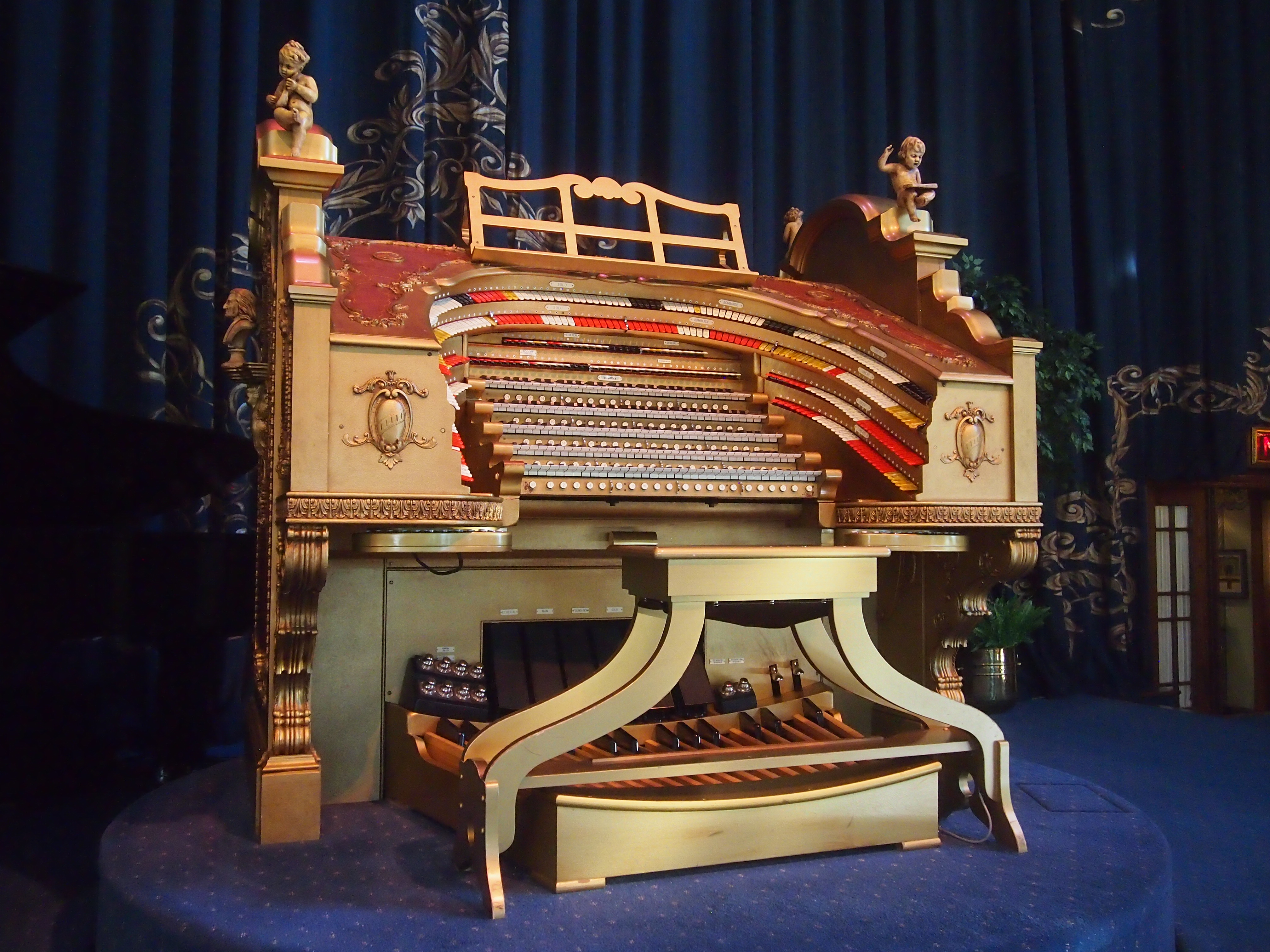 Stepping back a bit.
Stepping back a bit.
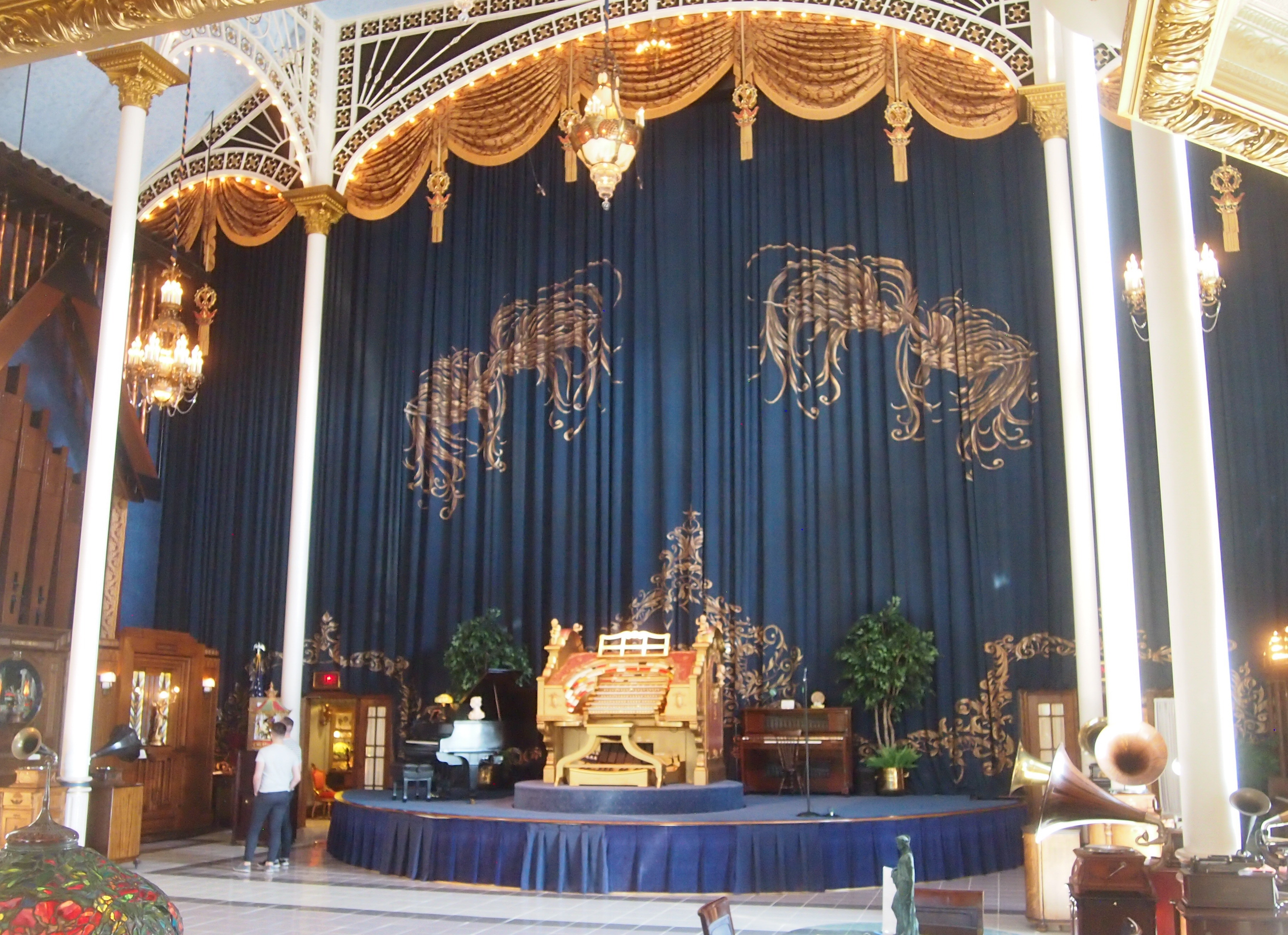 And then turning around. This is view from the console, to give a little context.
And then turning around. This is view from the console, to give a little context.
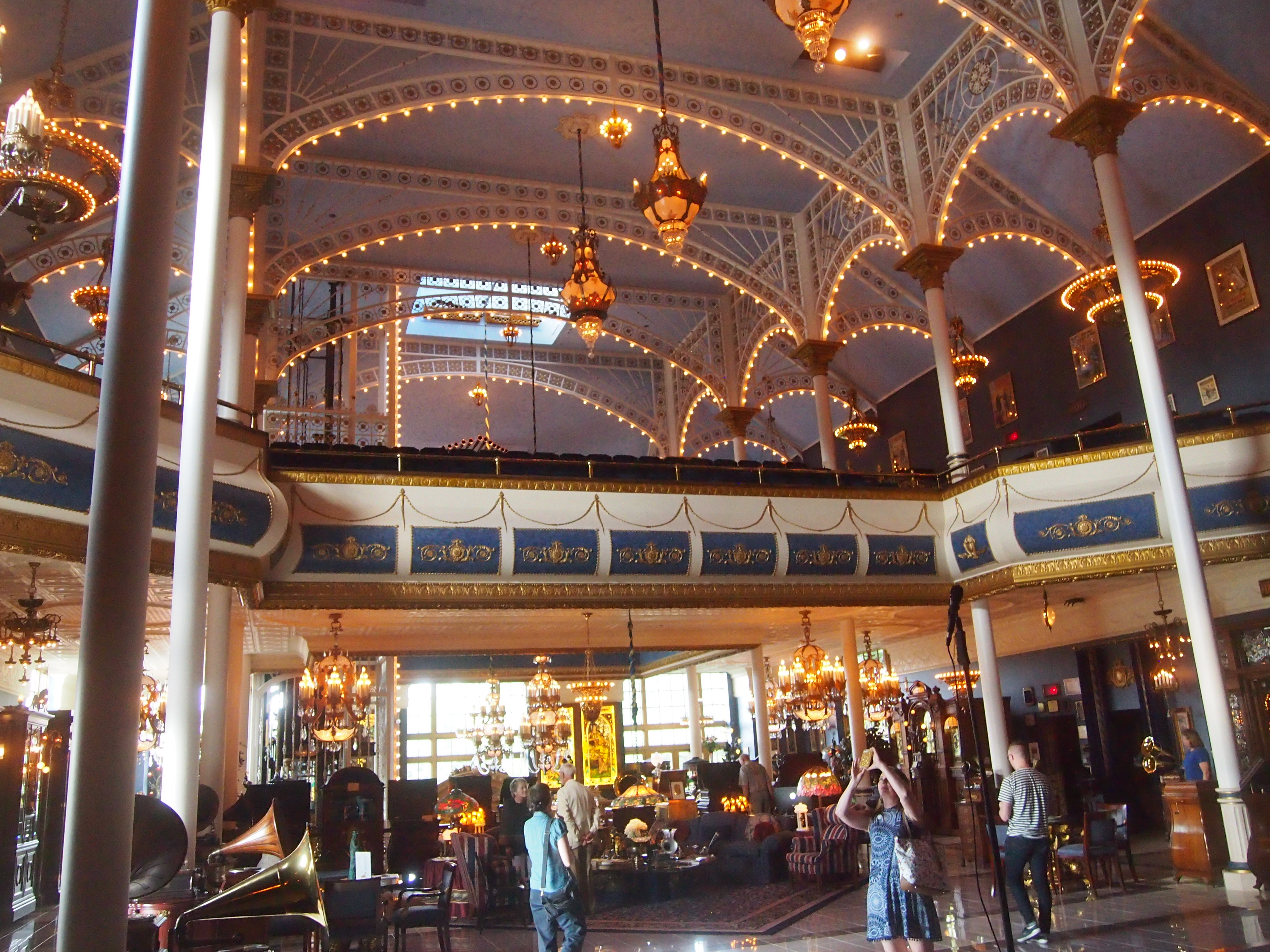 The room counts as a small auditorium, and we listened to the theater organ from the balcony. Quite a wall of sound. It’s worth quoting the mansion’s web site at some length on this machine.
The room counts as a small auditorium, and we listened to the theater organ from the balcony. Quite a wall of sound. It’s worth quoting the mansion’s web site at some length on this machine.
“The nucleus of the theatre organ, which was previously installed in the old music room (Wurlitzer opus #1571, built in 1927 for the Riviera Theatre in Omaha) has been expanded to 80 ranks of pipes. The overall result is the most versatile orchestral theatre pipe organ ever built.
“Behind the scrim are five chambers containing pipes, percussions, wind regulators and controls in a four-story-tall area. The console is patterned after the original from Chicago’s Paradise Theatre; it is mounted on the original Peter Clark lift from the Granada Theatre, which raises it from the lower level cage enclosure up to concert playing position.
“Mounted on the wall to the left are the 32′ Diaphone pipes, and to the right are the 32′ Bombarde pipes. A 32-note set of Deagan Tower Bells, the largest of which weighs 426 lb., hang on each side of the room… To the rear of the room, the ‘Ethereal’ pipe chamber in the attic echoes softly from the skylight area, while the brass ‘Trumpet Imperial’ and copper ‘Bugle Battaglia’ speak with great authority from the back wall.”
The American Orchestrion Room, elsewhere in the mansion, features art glass-front orchestrions, along with Tiffany and other art glass lamps and a large collection of Victorian chandeliers. This is only one end of the room, which is fairly long.
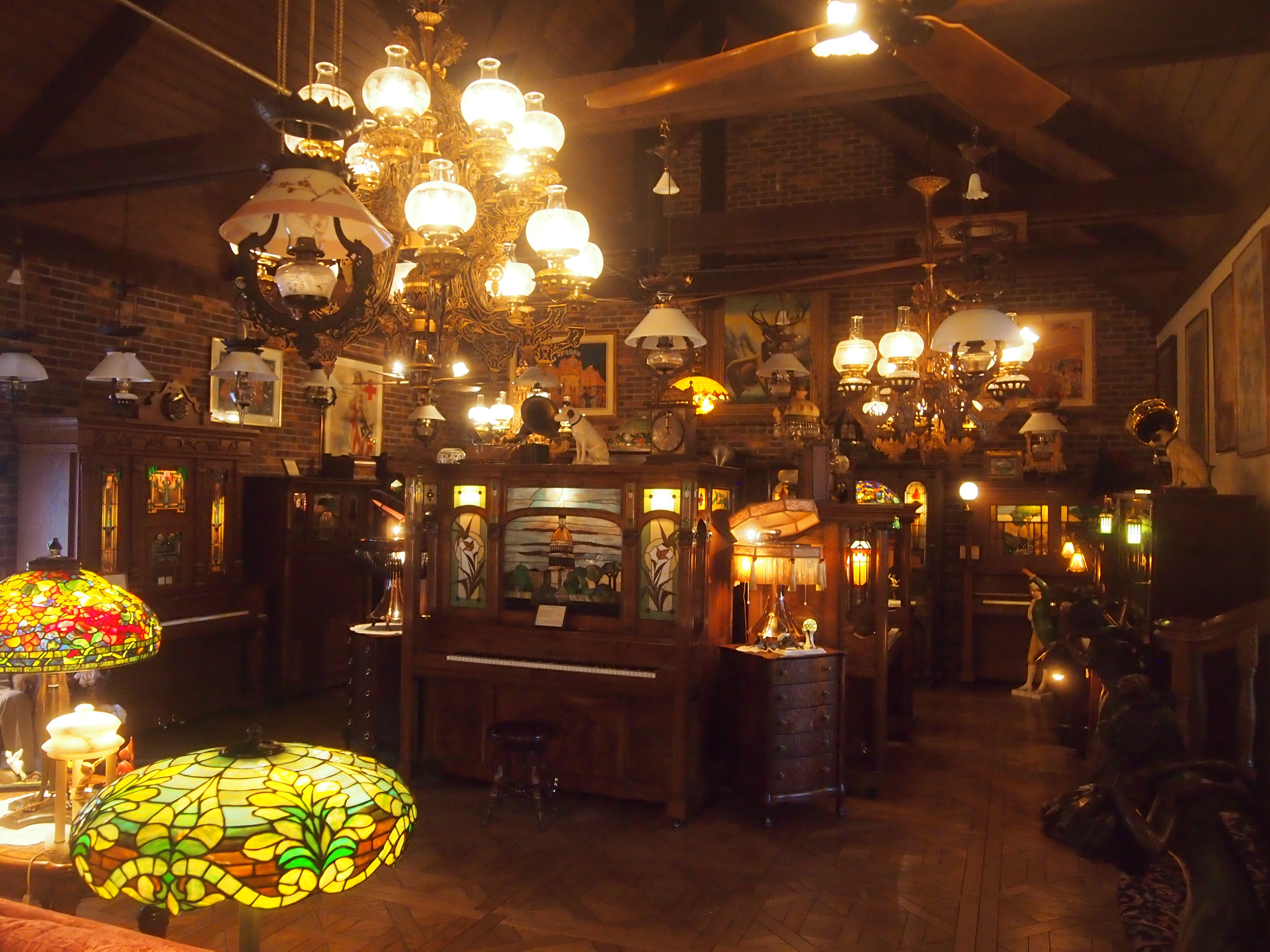 The room includes a violin-playing machine, the likes of which I’d never seen.
The room includes a violin-playing machine, the likes of which I’d never seen.
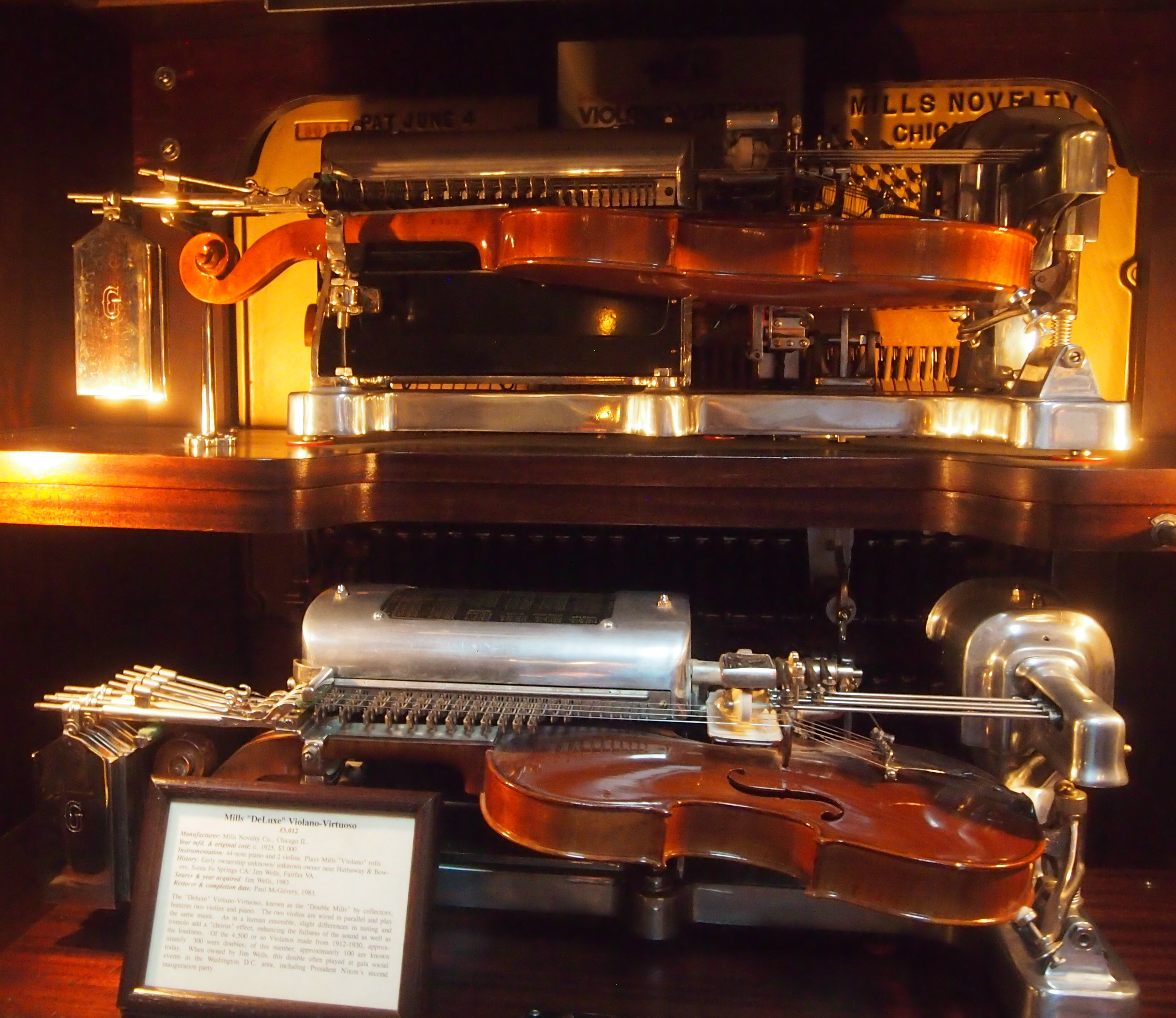 And a hand-cranked mechanical bird in a cage, with a mechanism inside covered with actual bird feathers. As might have amused the raja of one of the princely states about 100 years ago.
And a hand-cranked mechanical bird in a cage, with a mechanism inside covered with actual bird feathers. As might have amused the raja of one of the princely states about 100 years ago.
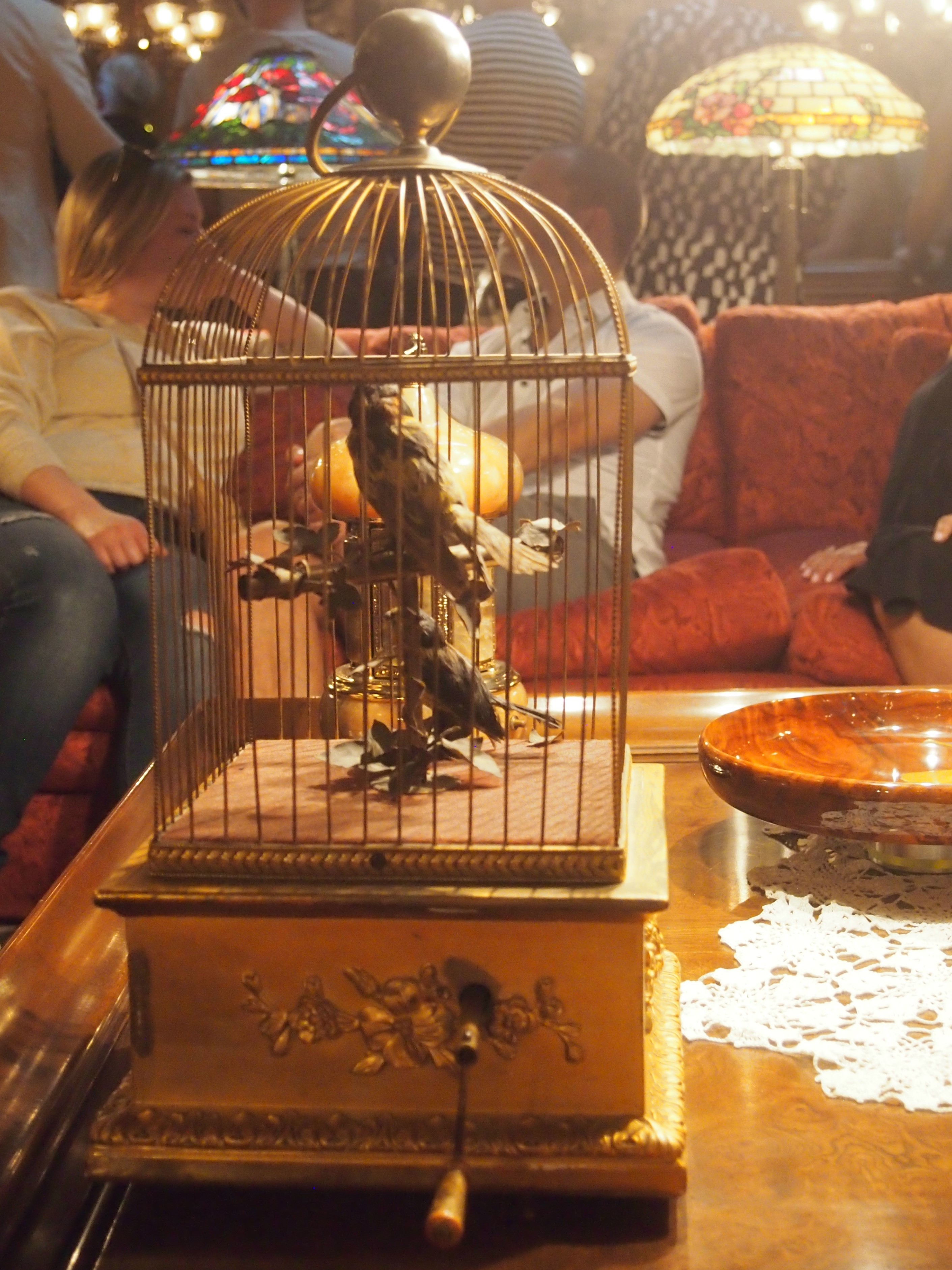 From there, stairs led to the lower level of the mansion, and a display of machines similar to music-making devices in some ways, but all together different in others. More about that tomorrow.
From there, stairs led to the lower level of the mansion, and a display of machines similar to music-making devices in some ways, but all together different in others. More about that tomorrow.